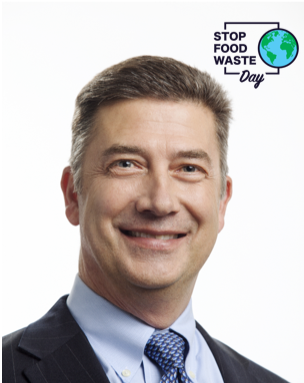Karl Deily - President of Food Care, Sealed Air
Rethinking the Food Waste Challenge to Protect our Food Supply
Growing enough food to feed the world is no small task, especially when per-capita consumption continues to increase. Increased consumption has also increased the amount of food we waste and the precious resources that go into producing it. At the same time, one in eight people in the world continue to lack sufficient nutrients. If we’re truly going to stop food waste—one of the biggest social and environmental challenges of our time—we need to examine how we are thinking about the problem. This is what motivates me to support the Stop Food Waste Day pledge.
Getting serious about reducing food waste will mean understanding the reasons why we waste food as well as our long-held beliefs, some of which actually can increase food waste. By addressing some of the common misconceptions about food waste, we are one step closer to solving this global challenge.
#1: “We can only end hunger by growing more food”
Did you know that 40 percent of the world’s food that’s produced is never consumed? The Food and Agriculture Organization of the United Nations estimates that if we cut just one quarter of that food waste, we could feed 870 million hungry people.

Making sure that the food we produce reaches people’s plates unspoiled can be a major step in creating a more sustainable food system worldwide. To do this, we’ll need better management of the food supply chain, strong communication with retailers and foodservice operators to anticipate customer needs, predictive technologies on use and freshness, and proper protection to help keep food fresher, longer.
#2: “I don’t play a part in food waste”
Even though you may be cleaning your plate at every meal, you are likely contributing to food waste in ways you may not realize. In developed nations, retailers and consumers are responsible for almost 40 percent of our wasted food. This is partially a result of consumers not fully understanding food labels and throwing out food that’s still usable.[1]
Another issue is that people often refuse to buy “ugly” fruits and vegetables, even though quality and taste is the same as perfect produce. Consumer food demands and preferences drive retailer and processor decisions and impact the amount of food wasted. This is important to keep in mind when you are shopping or selecting groceries.
#3: “Packaging is more damaging to the environment than food waste”
Packaging must be carefully planned from the start to reduce waste in the supply chain. Over-packaging, poor design, and unsustainable material choices can all be major areas of waste that harm our planet. Properly designed packaging, however, provides maximum protection with the minimum amount of material. Most importantly, it plays an absolutely crucial role in reducing food waste and its environmental impact.
Many people don’t realize that the environmental impacts of food waste are greater than the environmental impacts of the use of packaging. Rotting food that gets sent to landfills emits the harmful greenhouse gas—methane. In this capacity, did you know that if food waste were a country, it would be the third biggest greenhouse gas contributor?
Producing and delivering food also requires resources, from farmland to water to the energy used to transport it. If that food is then wasted because it wasn’t properly protected, all of those resources are also wasted instead of being used to provide valuable nutrients.
This issue will only become more pressing as the population grows and we need to work together to make a difference. On Stop Food Waste Day, I pledge to be a Food Waste Warrior, will you?
Pledge now and learn how to reduce food waste!





